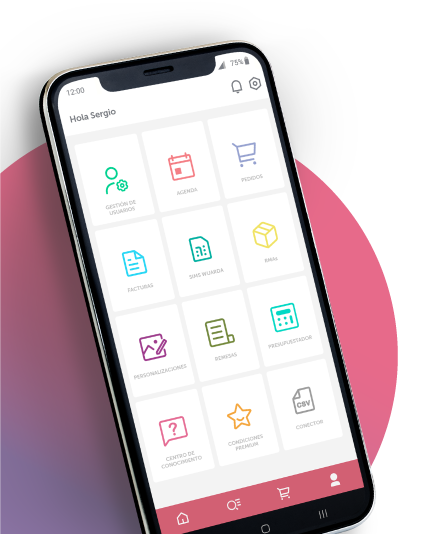One of the most common problems in the field of education is the continued application of traditional teaching systems, where all students receive the same instruction, regardless of their skills, needs or interests, causing low learning motivation. In Spain, more than 55% of schools have not yet incorporated a digital school system, this being understood as a set of tools and technological resources that are used to improve education and teaching in an educational institution.

Interactive displays are used in education to provide a more immersive and participative learning experience for students. Among many other advantages, they are used for presenting multimedia content, such as videos, images and sounds, and also to allow students to interact with the content through note-taking, drawing and note-taking. In addition, interactive displays can be used for real-time collaboration, allowing students to work together on projects and discuss ideas in groups.
At Visiotech, distributor of audiovisual solutions, you will find a wide range of Hisense interactive touch screens: easy to use, compatible with all the peripherals needed to digitize a classroom, with the necessary technical requirements, offering an unbeatable price and quality of the highest level.
Benefits of using interactive displays in the classroom
One of the main advantages of interactive displays applied to education is that they can help improve students' attention and engagement inside the classroom. By using multimedia content, students visualize and experience the content in a clearer and more engaging way, which helps to increase their interest and motivation in learning. In addition to this, they can also help improve collaboration between students and teachers, as they allow students to participate in learning in an active and collaborative way, encouraging critical thinking and creativity.
Interactive displays offer multiple resources and solutions for schools, some of which include:
- Improved teaching: Interactive displays can be used to present educational content in an engaging and dynamic way, which helps to keep students' attention and improve their comprehension.
- Real-time collaboration: Interactive displays enable students to work together on the same document or presentation, encouraging collaboration and teamwork.
- Access to digital resources: Interactive displays can connect to the Internet and access a large number of educational resources, such as videos, educational games and applications.
- Assessment and performance tracking: These screens can be used to conduct assessments and track student performance, allowing teachers to tailor their teaching to the individual needs of each student.
- Saving time and money: Interactive displays can replace traditional materials such as books and whiteboards, saving time and money in the purchase of these materials.

The most complete interactive displays for education on the market
Hisense interative touch displays are available for sale on differen sizes; 65”,75" and 86”4K ULTRA HD. Furthermore, they offer the following features:
- Easy connection usability: wired, wireless or dongle.
- Wireless transmission dongle.
- Multiple inputs (HDMIx2, DPx1, OPSx1, LANx1, USBx4 (1 for each camera), Type-Cx1, Touchx1, RS232 INx2).
- OPS option.
- Optional plug&play camera.
- Near-Field Communication (NFC) touch transmission.
- Simultaneous touches ≤20.
- Dynamic graphics that can be easily stretched, rotated, moved or copied.

In conclusion, Visiotech has an extensive portfolio of audiovisual solutions to meet all the needs of our customers, including meeting rooms, videoconferences, digital classrooms, LED screens, professional monitors, players, associated peripherals, etc. These products are designed to cover the entire spectrum of market verticals such as Retail, Corporate, Hospitality, Health and Safety, Control Rooms, public tenders, etc. being versatile to adapt to the technical and economic requirements of each project, constantly looking for alternatives that provide a solution to our customers.


 Login
Login





